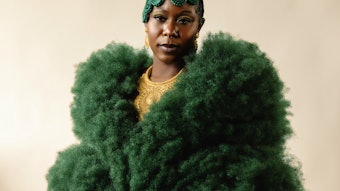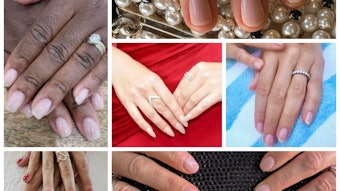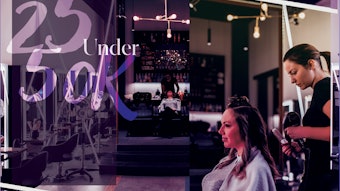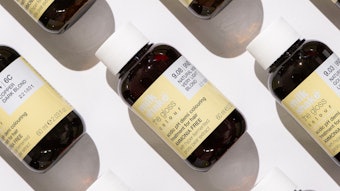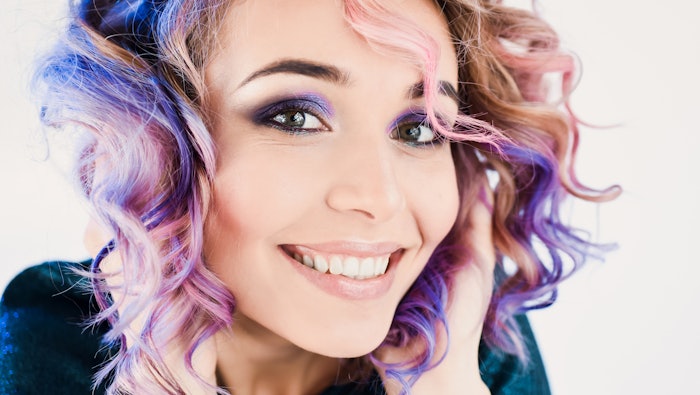
Various test methods, some borrowed from skin care, can be used to validate hair product claims. This article reviews several, including conditioning, anti-breakage, hydration, skinification-related, damage repair, anti-dandruff, anti-hair loss and more.
This article is only available to registered users.
Log In to View the Full Article
Various test methods, some borrowed from skin care, can be used to validate hair product claims. This article reviews several, including conditioning, anti-breakage, hydration, skinification-related, damage repair, anti-dandruff, anti-hair loss and more.
Hair styles, shapes, growth patterns and colors are diverse and prominent features we can use to express ourselves to the world around us, including on social media. The promotion of different hair styles and grooming techniques by influencers and celebrities has also led to a more competitive hair care market, with some niche brands reaching cult status.
Aside from skin, hair is the characteristic attribute for health, youth and attraction. It can even serve as a communication tool or political instrument; take “no-shave November” and the “Movember” charity for example, for which some men grow moustaches in support of men’s health issues.1
The COVID-19 pandemic severely impacted the hair care market. As is well-known, during the lockdown, many salons and studios were forced either to close or restrict their operations and increase social distancing measures. This led to a decline in salon services but at the same time, an increase in home care products especially for hair coloring. In fact, the advent of do-it-yourself (DIY) hair coloring revolutionized the global hair market. The UK company Superdrug, for example, saw a 76% growth in sales of this hair care category between April and May 2020 alone, as a result.2
In spite of the impact of the pandemic, the hair care market, valued at $106.91 billion in 2024, is expected to increase to $213.47 billion by 2032.3 Hair care products for women are the most frequently purchased and used, with shampoos and conditioners leading the field. For men, hair care is the most important and favored sector of all cosmetics.1 And, with our globally aging society, the demand and opportunities for products to treat gray and aging hair is one area that is expected to continue growing. Indeed, hair care is one of the most important and competitive sectors in all of the beauty industry.
Considering the diversity of hair types, needs and preferences, the market is saturated with different product formats and claims. There are even options to personalize hair care. For example, the consumer inputs his/her hair wants/needs into a digital system that then provides them a product recommendation – or even a bespoke product. Some companies pair nutritional supplements and treatment devices with said personalized products.4
Related to nutrition, another dynamic within the hair care space is the consumer focus on health underscoring that scalp health impacts hair’s condition and growth. What’s more, ingredients that confer health benefits to the skin have been translated into scalp and hair care, à la the skinification of hair.
Consumers have high expectations for hair care, so when it comes to proving that products deliver on claims, various techniques and tools are employed – some even adapted from skin care. The present article provides an overview of test methods to validate trending hair and scalp care claims such as conditioning, anti-breakage, hydrating, skinification-related (e.g., scalp moisturization, sebum control, etc.), damage repair, anti-dandruff, anti-hair loss and more.
Tress Tests: Conditioning, Breakage, Heat Protection, Styling Hold and More
Traditional hair care tests include mechanical evaluations and studies of a product’s impact on hair structure and appearance. To standardize these, tests are often performed on hair tresses. In this context, claims-related best practices describing biophysical methods – including instrumental methods (mechanical and visual) to describe hair fiber characteristics – have been established.6-8
Combing force and hair breakage: The most widely used instrument-based mechanical test to measure the efficacy of shampoos, conditioners, masks and other hair care products is the combing force test, which supports a broad range of claims. Here, wet and dry combing forces are measured in tresses to substantiate claims related to conditioning and detangling (see Figure 1).
In addition, mechanical measurements of hair breakage facilitated by repeated combing can show how effectively products protect hair or improve its resistance to damage. The increase or decrease in number of broken hair fragments can support claims such as anti-breakage.
Split ends and hair smoothing: To support a prevents split-ends claim, a minimum of 50 fibers is pulled from tresses treated under a given protocol and evaluated under magnification for changes in the number or severity of split ends. On the other hand, friction tests, where a bar is pulled along a hair tress and the resistance is measured, can be used to support claims like smooth and silky performance.
DSC, UV and heat protection: Differential Scanning Calorimetry (DSC) is a useful tool to measure a product’s ability to protect cortical keratin against denaturing caused by heat styling tools or UV insult. This method determines the thermal resistance of hair's major morphological components and validates claims for heat protection and UV protection.
Tensile and fatigue testing, hair damage, elasticity and strength: Claims related to hair strength and elasticity depend on hair’s inner tensile properties and structure, which are affected by a wide range of factors. Measuring these properties thereby offers a view into activities within hair. Analyses via single fiber tensile testing or single fiber fatigue testing are primarily used to measure hair damage and changes thereof.
Bending tests and styling hold: Bending tests can be used to support claims related to long-lasting styling hold and the strength of fixation. There are generally three different types of tests depending on the product to be evaluated: bending the film to determine stiffness, measuring the remaining hold or durability, and determining the flexibility of the hold.
Visual assessments, shine, color, volume, etc.: For evaluating hair shine or gloss (see Figure 2), color, curl retention and volume, expert or instrumental visual tests have become standard practices. For example, a hair gloss assessment can be made by an expert panel or through image analysis using polarization imaging.
Color protection, anti-color fade products or the durability of hair dye are often measured using a colorimeter. In addition, the volume of hair tresses before/after product treatment can be assessed using a silhouette technique, followed by image analysis.
Hair ‘Hydration’ Misperception
A common consumer complaint is that the use of a shampoo and/or given treatment will “dry out” the hair. This has promoted the demand for specialized products to counter such an effect, including hair conditioners and masks.10 This consumer concern centers around the undesired perception of hair being brittle, lacking shine, looking straw-like and feeling less smooth and less vital.
While hair contains different amounts of water, generally between 12-15%,9 the main factor influencing hair’s water content is the relative humidity of the surrounding atmosphere. Indeed, high humidity conditions are the very cause of a bad hair day. This relationship is described via the hair water adsorption isotherm.
To the hair expert, consumer demand for products that moisturize hair is completely misleading. In fact, if hair has an especially high affinity for water, it can be assumed to be damaged. Healthy hair is designed to resist impinging water, whereas damaged hair will easily and quickly absorb it. Therefore, the popular claim for products to treat dry, damaged hair is, in reality, not related to hydration; it means something entirely different.
Hair Hydration and Scalp Moisture Measurements
The measurement of hair hydration is still an interesting aspect and may help to support special hair care claims. This property can be measured by gravimetric methods such as dynamic vapor sorption (DVS).
Another approach is through the Hair´s Technical Water Content Test – which primarily measures hair porosity and how well hair absorbs and retains moisture. This is often carried out using a glass of water, into which strands of hair are placed to see how long they float, if they sink slowly or sink quickly.
A third option is using induced chemoluminescence.11 This method, however, requires greater financial and spatial commitments.
While hair “hydration” is controversial, scalp moisture is an important parameter to ensure health and proper barrier functioning. Hair should prevent excessive water loss and dehydration of the scalp but with dry skin conditions such as atopic dermatitis, scalp hydration and barrier quality can be severely compromised, leading to itching and irritation, scaliness and dry dandruff.
To measure scalp moisture, electrical devices based on the dielectric content of skina can be used, although they only work on hairless skin because hair hydration affects the calculation. An alternative is to measure close to the hairline or in bald patches on the scalp, which can provide important information about the scalp’s condition.
In vivo ‘Skinification’ Tests: Sebum, Erythema, pH Balance and Sensitivity
Skinification is an evolving trend that in reference to hair, means treating both the hair and scalp like facial skin; e.g., using actives and proteins traditionally applied in skin care, or implementing customized product routines. This trend emphasizes the importance of caring for the scalp to maintain hair health and ensure a generally more groomed appearance.
Products that moisturize, exfoliate and provide scalp skin barrier support are becoming increasingly popular, as they promote healthy hair from the root. Transferring skin care ingredients to the hair requires a deep understanding of the structure and function of the scalp. In addition, developing an effective formulation relies on selecting the right active ingredients to address the issues at hand; this also means determining whether the actives will be absorbed and are applicable to the hair and scalp.
Since measurements and claims related to skinification are skin-oriented, they require traditional skin testing methods with adaptations for the hair and scalp. Objective methods such as sebum measurementsb, colorimeters and gloss meters have already found their way into hair testing, as described next.
Sebum balancing and restoring lipids: The main function of sebum, produced by the sebaceous gland in the hair bulb, is to protect the scalp and keep the hair shiny and supple, at the same time protecting it from ambient dryness and breaking. Oil is released to the hair through a small channel and transported along the hair shaft away from the scalp.
When produced in high quantities, sebum will lead to greasy hair and scalp problems that may cause increased microbial activity, itching and oily dandruff. Additionally, especially in urban areas with high pollution, fine dust particles and other potentially harmful pollutants may cling to the oil, making the hair look dull and degrading the hair quality.
To remove excess oil and pollutants, frequent washing is required, which will most notably stress longer hair due to removal of the f-layer, resulting in dry-feeling ends. It can also trigger the production of more oil to compensate for the frequent removal – leading to a vicious circle.
To prevent this effect, the aim of a product would be to balance the oil production to a moderate level or to restore lipids. Sebum measurements can serve as an indicator of these benefits (see Figure 3).
This approach for the skin, hair and scalp was published back in the 1980s.12, 13 A meter containing a specialized foil is used, wherein the foil is contacted with the skin, scalp or hair, and in the presence of sebum, it becomes transparent. The meter then measures this transparency photometrically to determine the sebum levels.
While this approach has proven suitable for measuring the sebum on skin and hair, sometimes it proves difficult to reach the scalp through the hair. As such, a special adapter pen was developed to reach between the hairs and optimize the contact of the foil to the scalp (see Figure 4).
Hair gloss/luster and color/erythema: Gloss and color claims are evergreen in the hair care space, with measurements for such supporting booming hair claims such as luster, shine, color intensity or lasting color, as well as sun or salt/chlorinated water protection. In addition, as previously described, for the steadily growing aging population, products designed to counter gray hair either at home or at the salon an important market sector.
Generally, gloss and color measurements are performed on hair tresses. Colorimeter and gloss meters (see Figure 5), which have been used in skin measurements for some time, can be easily adapted to hair measurements. In addition, device models equipped with small measuring surfaces (see Figure 6) enable in vivo measurements of the scalp through the hair; for example, to assess increased erythema due to irritation – and the efficacy of products to mitigate this.
Barrier integrity, sensitivity, TEWL pH balance: The barrier function of the scalp is key to evaluating the safety of products applied to the head. Barrier disruptions can result in increased sensitivity, itching and dandruff. Since the ban on animal testing for cosmetics, transepidermal water loss (TEWL) measurements taken in vivo in human subjects or in vitro in cultured cell tissues have been used to indicate barrier disruption. Notably, TEWL is also used as an indirect measurement of the water content of the scalp.
To evaluate barrier disruption, an open chamber measurement by a specialized TEWL devicec is most commonly used. Like sebum tests, to reach in between hairs, a special probe was developedd to enable full contact with the scalp. This probe has a small, 2-mm diameter measurement surface (see Figure 7).
In terms of related claims like pH neutral or for sensitive scalp, these can be supported by basic pH measurements.
Image Analysis: Hair Density, Damage and Dandruff
Aligning with skin care, the hair care segment has adopted several photographic techniques to evaluate the efficacy of products and support claims.
Hair density and growth: A common concern in the ever-aging world population is the thinning of hair.14 The efficacy of products designed to improve hair volume can be assessed by dedicated dermatoscopes (trichoscopy) or specialized cameras that offer high resolution, non-glossy images of the hair and scalp. This can also be determined by measuring the thickness of single strands.
Dermoscopes and specialized cameras can additionally measure changes in hair length, a parameter sometimes used for other hair-related claims. For example, with supplements, hair length assessments can substantiate growth claims – although as an aside, it is important to note that in the U.S., hair growth is considered a drug claim and other regions consider this a quasi-drug claim. Such imaging techniques could also demonstrate the quality of shaving (see Figure 8).
Hair fiber condition: Methods such as transmitted light microscopy and scanning electron microscopy, as well as high resolution-cameras with magnification objectives, can reveal the detailed surface morphology and structure of hair fibers – including damage. These approaches can be used to substantiation of hair protection and pseudo-repair claims, such as split end repair.
Dandruff and scalp redness: Cameras with parallel- and cross-polarized light (see Figure 9) can be used to illuminate dandruff or redness of the scalp – conditions that are also related to the barrier quality of the scalp.
Dandruff Considerations
The same way as skin does, the scalp will constantly shed small dandruff flakes from its surface. This is a normal process, making room for new cells to grow from the base of the epidermis. Usually, these minuscule and more-or-less imperceptible flakes are removed by washing and combing the hair. However, nearly 50% of the world’s population suffers from clearly visible flakes at one time or another, a problem known as dandruff (see Figure 10).15 In general, dandruff causes more social and psychological problems than medical ones, affecting self-esteem and confidence.16
Dandruff is difficult to define because it can manifest in different conditions. It blurs with seborrheic dermatitis and scaliness from other skin issues such as atopic dermatitis and psoriasis.17 Dandruff is often linked to the colonization of the scalp by Malassezia furfur, a fungal microorganism, and seborrhoeic conditions, allergies or dehydration of the scalp may result in dandruff. Additional external triggers have been identified as well, such as sun exposure16 or treatment with unsuitable products.
While scalp condition can be assessed by TEWL probes and sebum measurements directly on the scalp, or skin surface moisture measurements on the forehead close to the hairline, the extent of dandruff is often assessed by expert rating. Or, for more objective results, imaging methods can be used, as stated previously.
Thus, the efficacy of products designed to prevent or lessen dandruff can be assessed via these methods before and after treatment. The application of an anti-dandruff shampoo, for example, should shift the distribution from larger-sized to smaller-sized dandruff flakes (see Figure 11).
Hair Loss Mechanisms and Measurements
Another widespread consumer concern is hair loss. Androgenic alopecia, also known as pattern hair loss, is a chronic progressive condition that affects 80% of men and 50% of women.18 The causes for alopecia are attributed to numerous combined influences ranging from genetic predisposition, increased dehydrotestosterone production,19 and mineral and vitamin deficiency, to stress, toxins, microorganisms and head posture and facial expressions causing scalp tension and reduced blood flow.29
In contrast to other mammals that shed their fur seasonably, humans undergo unsynchronized hair growth cycles.20 This irregular pattern is characterized by hair in different growth stages at the same time – ideally 90% in anagen (growth phase), 1-2% in catagen (regression phase) and 8-9% in telogen (resting phase).21
In androgenetic hair loss, the anagen phase is shortened and the anagen-telogen rate may shift from 6:1 to 2:1.20 The changes from anagen to catagen to telogen and the ratio of the different hair growth stages can be assessed by trichography, either through the microscopic evaluation of hair roots or by measuringe hair growth within a certain time span after shaving.
Other sources point to the scalp microbiome promoting inflammation as a cause for hair loss.22 Especially in the case of alopecia areata (AA), a circular hair loss condition that affects more than 2% of the population at some point in life, bacteria and the balance between Staphylococcus epidermidis, Staphylococcus aureus and Cutibacterium acnes (syn. Propionibacterium acnes), the three major microbial species found on the scalp, seem to play an important role.23, 24
Analysis of bacterial distribution at the genus level has shown an increase of C. acnes in AA patients, alongside a general decrease of Staphylococcus; especially S. epidermidis.25 It is yet unknown whether these changes are a cause or a consequence of the disease. The activity of C. acnes can be made visible and calculated using special UV wavelengths that cause the porphyrins produced by the bacteria to autofluoresce.
Besides optical analysis, measuring scalp stiffness can provide interesting insights. It has been observed that balding men, unlike women, tend to have chronically tighter scalps than those without hair loss. Studies have clearly identified mechanical stress on the scalp as an active factor in androgenetic alopecia.26 Measurement of the rigidity (stiffness) of the scalp could therefore give additional information on the efficacy of tension-relieving methods.
Finally, microcirculation, also considered one of the elements involved in hair loss, can be determined using capillaroscopy, or even by measuring the scalp temperature.27
Conclusions
Today’s beauty consumers expect high-performing products with proven efficacy. The present article provides an overview of the test methods used to substantiate trending claims related to hair conditioning, anti-breakage, hydration, scalp health, damage repair and hair loss.
In addition, claims known in skin care for quite some time, such as moisturization, sebum control, anti-aging and the like, have become increasingly popular for hair – i.e., the skinification of hair care. This has diversified hair categories beyond standard shampoos, conditioners and styling aids.28 While many standard tests can substantiate these claims, some require adapting skin care tests for hair; these methods are also discussed here.
Does the skinification trend make skin care the new hair care? Or vice versa? In either case, new trends are continuously born by influencers and celebrities on social media – requiring creative and credible proof of their safety and efficacy.
Footnotes
a Corneometer,
b Sebumeter,
c Tewameter and
d Tewameter Nano are devices from Courage & Khazaka.
e Trichoscan, Tricholog GmbH
References
1. Movember. (Accessed 2025, May 1). The Movember foundation. Availavle at https://de.movember.com/en/about/foundation/.
2. Nandi, P. (2025, Apr). Hair care market research report: By product (hair styling, shampoo, hair dye, conditioner, hair oil), by application (hair treatment, scalp treatment), by distribution channel (hypermarkets, e-commerce, pharmacies) - Forecast to 2027. (In German). Market Research Future. Available at https://www.marketresearchfuture.com/de/reports/hair-care-market-6020 https://www.marketresearchfuture.com/de/reports/hair-care-market-6020.
3. Fortune Business Insights. (2025, Apr 14). Hair care market, share and industry analysis, by product (hair dyes, shampoo, conditioner, hair oil and others), by distribution channel (supermarket/hypermarket, specialty stores, online stores and others), by region and forecast, 2025-2032. Available at https://www.fortunebusinessinsights.com/de/markt-f-r-haarpflege-102555.
4. Braun, N. and Heinrich, U. (2020, Jul). What can complex dietary supplements do for hair loss and how can it be validly measured — A Review. Applied Sciences. Available at https://www.mdpi.com/2076-3417/10/14/4996.
5. Ibid Ref 1
6. Robles VelascoI, M.V., et al (2009, Jan/Mar). Hair fiber characteristics and methods to evaluate hair physical and mechanical properties. Braz. J Pharm Sci 45(1), Sao Paulo.
7. Evans, T.A. (2020 Sep). Testing tactics in hair: Equipment — A 'buyer's guide.' Cosm & Toil. Available at https://www.cosmeticsandtoiletries.com/testing/tech-equipment-services/article/21835843
8. Brandt, M., et al. (2016). Substantiating claims for hair care products. SOFW. Available at https://www.sofw.com/de/sofw-journal/archiv/archiv2/176-sofw-journal-6-2016
9. Beauty Tomorrow. (2015, Mar 23). The chemical properties of hair. Medium. Available at https://beautytmr.medium.com/the-chemical-properties-of-hair-955985908d05.
10. Frattempo. (Accessed 2025, May 1). Top 10 global consumer concerns in hair care (2015). Available at https://frattempo.co.uk.
11. Cosmetics Business. (2014, Feb 6). A signal in the dark. Cosmetics Business. Available at https://www.cosmeticsbusiness.com/news/article_page/A_Signal_in_the_Dark/93009
12. Maibach, H.I., and Patrick, E. (1988). Session VI: Hair, sebaceous glands and nails. 7th International Symposium of Bioengineering and the Skin.
13. La Mendola, S., Rinaldi, F., Salvadori, M.C. and Clemente, F. (1994, Oct). Competence and satisfaction: A study of the hair and shampoo of 1,000 users of a trichology service. 18th International IFSCC Congress, Venice.
14. Trüeb, R.M., Rezende, H.D. and Dias, M.F.R.G. (2018, Nov-Dec). A Comment on the Science of Hair Aging. Int J Trichology. 10(6) 245-254; 10.4103/ijt.ijt_56_18. PMID: 30783331; PMCID: PMC6369639.
15. Sommer, B., Overy, D.P. and Kerr, R.G. (2015). Identification and characterization of lipases from Malassezia restricta, a causative agent of dandruff. FEMS Yeast Res 15.
16. Grimalt, R. (2007, Dec). A practical guide to scalp disorders. J Inves Derm Symposium Proceedings. 12(2) 10-14; doi:10.1038/sj.jidsymp.5650048. PMID 18004290
17. Ranganathan, S. and Mukhopadhyay, T. (2010, Apr-Jun). Dandruff: The most commercially exploited skin disease. Indian J. Dermatology 55(2) 130-134.
18. Piraccini, B.M. and Alessandrini, A. (2014, Feb). Androgenetic alopecia. G Ital Dermatol Venereol. 149(1) 15-24, PMID: 24566563.
19. English, Jr., R.S. (2018). A hypothetical pathogenesis model for androgenic alopecia: Clarifying the dihydrotestosterone paradox and rate-limiting recovery factors. ScienceDirect, Medical Hypotheses. 111 73-81.
20. Orasan, M.S., et al. (2016, Jul). Hair loss and regeneration performed on animal models. Clujul Med. 89(3) 327-334.
21. Hurt, M.A., Sperling, L.C., Cowper, S.E. and Knopp, E.A. (2012). An Atlas of Hair Pathology with Clinical Correlations. Second edition, New York and London: Informa Healthcare. And Dermatology Practical & Conceptual 3, no. 1 (2013); e0301a13, https://doi.org/10.5826/dpc.0301a13.
22. Ho, B.C., et al (2019, May 3). Microbiome in the hair follicle of androgenetic alopecia patients. PLoS One. 14(5) e0216330; doi: 10.1371/journal.pone.0216330; PMID: 31050675; PMCID: PMC6499469.
23. Sánchez-Pellicer, P., et al (2022, Oct 14). How Our Microbiome Influences the Pathogenesis of Alopecia Areata. Genes (Basel). 13(10) 1860; doi: 10.3390/genes13101860; PMID: 36292745; PMCID: PMC9601531.
24. Barquero-Orias, D., Munoz Moreno-Arrones, O., and Vanó-Galván, S. (2021). Alopecia and the microbiome: A future therapeutic target? Actas Dermo-Sifiliográficas (English Edition), 112(6) pp 495-502; ISSN 1578-2190; https://doi.org/10.1016/j.adengl.2021.03.011.
25. Pinto, D., et al. (2019). Scalp bacterial shift in Alopecia areata. PLOS ONE, 14, e0215206; 10.1371/journal.pone.0215206.
26. Chen, K.-Y., et al (2020). Androgenetic alopecia is associated with increased scalp hardness. J Euro Acad of Dermatol and Venereol, 34; 10.1111/jdv.16194.
27. Gerkowicz, A. (2013). Videocapillaroscopic alterations in alopecia areata. BioMed Research International. Available at https://onlinelibrary.wiley.com/doi/10.1155/2013/160203
28. Woods, C. (2020, May 29). Is skin care the new hair care? Global Cosmetic Industry. Available at https://www.gcimagazine.com/brands-products/hair-care/article/21849051/is-skin-care-the-new-hair-care
29. Tellez-Segura, R. (2015, Jul-Sep). Involvement of mechanical stress in androgenetic alopecia. Int J Trichology. 7(3) 95-9; doi: 10.4103/0974-7753.167468; PMID: 26622151; PMCID: PMC4639964.


